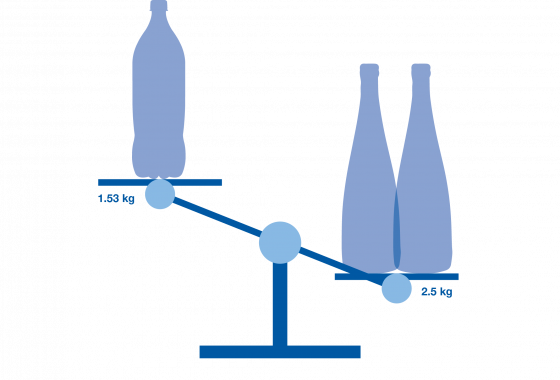A world without plastics? Wrong question!
Images of mountains of plastic waste polarise the debate regarding how to solve the problem. Calls are frequently made for a complete ban on plastics. But upon closer inspection, it becomes apparent that a demand of this kind doesn’t make any sense, in particular as regards sustainability.

This text would never have been produced in a world without plastics. It was written using a PC keyboard made of plastic and in front of a monitor with housing that’s likewise made of plastic. OK, maybe alternative means of disseminating this text would have been found in a plastic-free world – for example, with an entirely metal typewriter found at a flea market and a spirit duplicator, likewise made entirely of metal and bought at an antiques store. The printed sheets would then have been put in envelopes, addressed, taken to the post office and sent. But at this point at the latest, your personal control over the use of plastics would end, as the letters would end up in a stackable box made of plastic at the sub-post office.
Freeing the world of plastics is a vision that’s often circulated. It is, however, highly doubtful as to whether the world could do without plastics so easily. It is not only in the electronics industry that the material appears to have become indispensable – the same can be said for modern new builds, means of transport and, not least, the field of medicine. It’s hard to imagine hygiene and protection against infection without disposable syringes, disposable gloves, surgical masks and sterile packaging for dressing materials.
There are reasons why so many different areas of life are difficult to imagine without plastics. The material can take on many shapes, from ultrathin films to high-strength parts for an aircraft fuselage. It is lighter than the alternative materials while offering comparable stability, can be moulded using relatively little energy and lends itself to, for example, hygienically packaging foods to make them last longer.
The handling of the material is the problem
It’s worth taking another look at the question in the title. Before we look for ways in which to free the world of plastics, we should consider whether such a call even makes sense. It doesn’t, as demonstrated by the examples above. The notion that plastics are a problem is influenced by images of the uncontrolled disposal of waste by the consumer society. It is true that plastics which end up in the environment remain there for a long time and are broken down into smaller and smaller particles. It’s therefore not the material that’s the problem, but how it is handled.
Sustainability experts likewise say we should critically question the alternatives to plastic. Glass bottles as a substitute for PET bottles have specific disadvantages. Glass only becomes mouldable from a temperature of at least 1,300 degrees Celsius and therefore requires significantly more energy for its production than PET, which can be worked from a temperature of around 260 degrees.

With ALPLA, the tare weight of a 1.5-litre PET bottle is 33 grams. It takes two 0.75-litre glass bottles weighing 1,000 grams in total to transport the same amount of water – that’s approximately 30 times the weight of PET. Correspondingly, the energy consumed during transportation is significantly higher.
In the case of reusable glass bottles, their return transportation and cleaning require energy and water as resources too. A PET beverage bottle which goes through what’s known as bottle-to-bottle recycling to be turned into a new beverage bottle is the more sustainable solution. A reusable PET bottle performs even better.
It is important to take a closer look
Seeming plausible at first glance, the argument that paper bags are more environmentally friendly than plastic bags can likewise be debunked when considered more closely. From procuring the raw materials – in the case of paper, wood – and production to transportation and disposal, paper is not more sustainable as a packaging material. On the contrary – a paper bag would have to be reused three or four times to match the environmental footprint of a plastic bag. And a fabric bag made of cotton would even have to be used at least 130 times to seriously represent a sensible alternative.
Packaging accounts for around one third of all the plastics produced around the world. Much of this is single-use packaging which is disposed of directly after use. Experts recommend that the number and varieties of the materials used be reduced and that recycling systems be made mandatory. Many countries already have a functioning PET value chain in place.
Once PET bottles have been used as a packaging material, they can serve as a secondary raw material in many areas of industry such as in textile production. If plastics are incinerated at the end of their life cycle to generate energy, the problem of their ending up as waste in the environment uncontrolled does not even arise. If used sustainably, plastics are the best solution for many tasks in the modern world. It is with good reason that a world without plastics will remain a utopian dream.
(Autor: Claudia Wörner, yes or no.)
Do you like our texts? Perhaps even so much that you want to use them in your own media? Then please get in touch with us beforehand!
